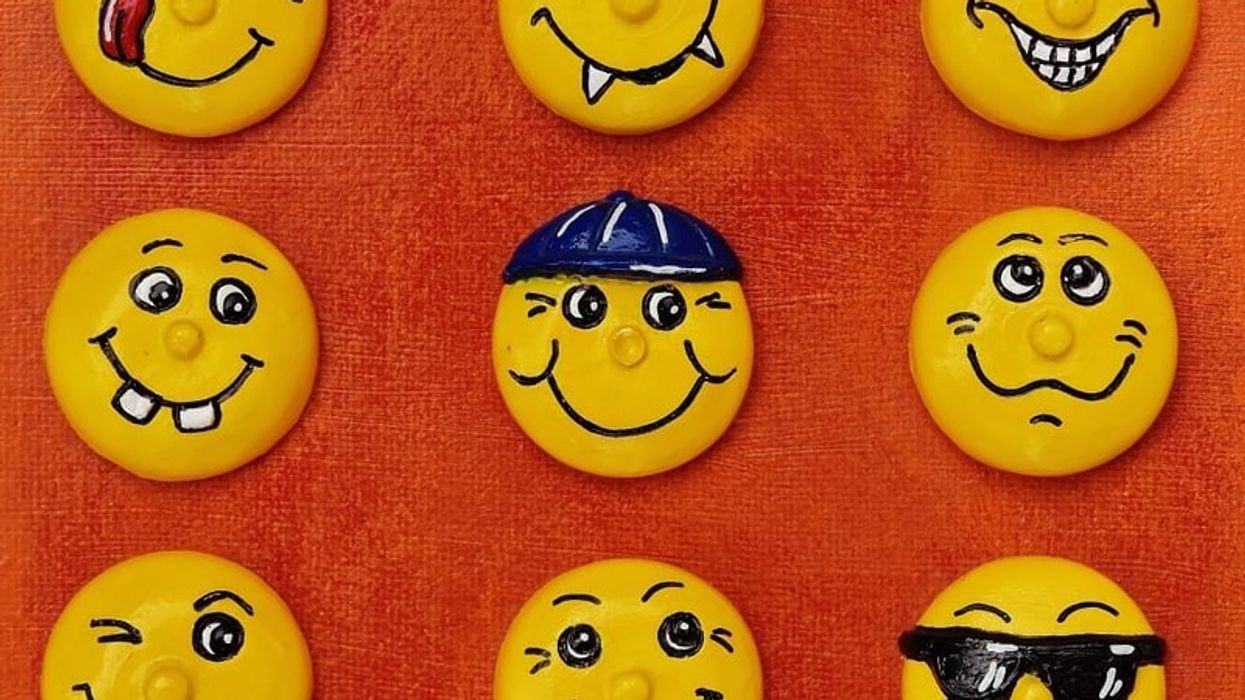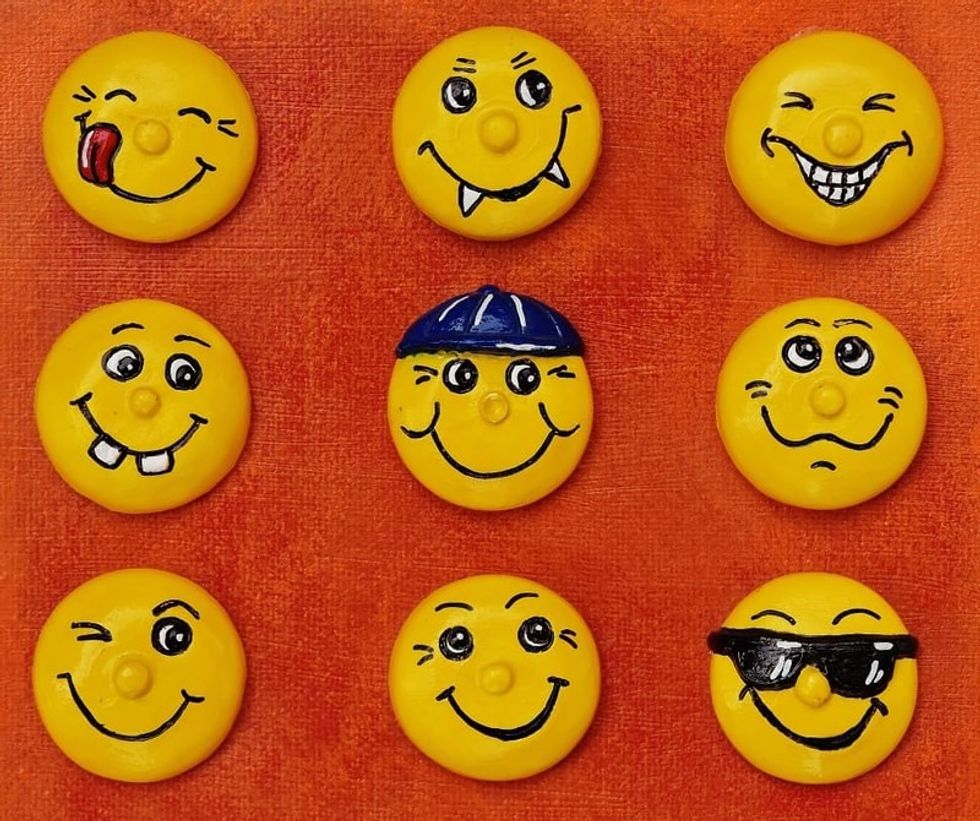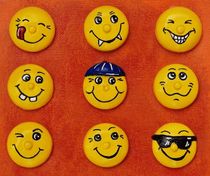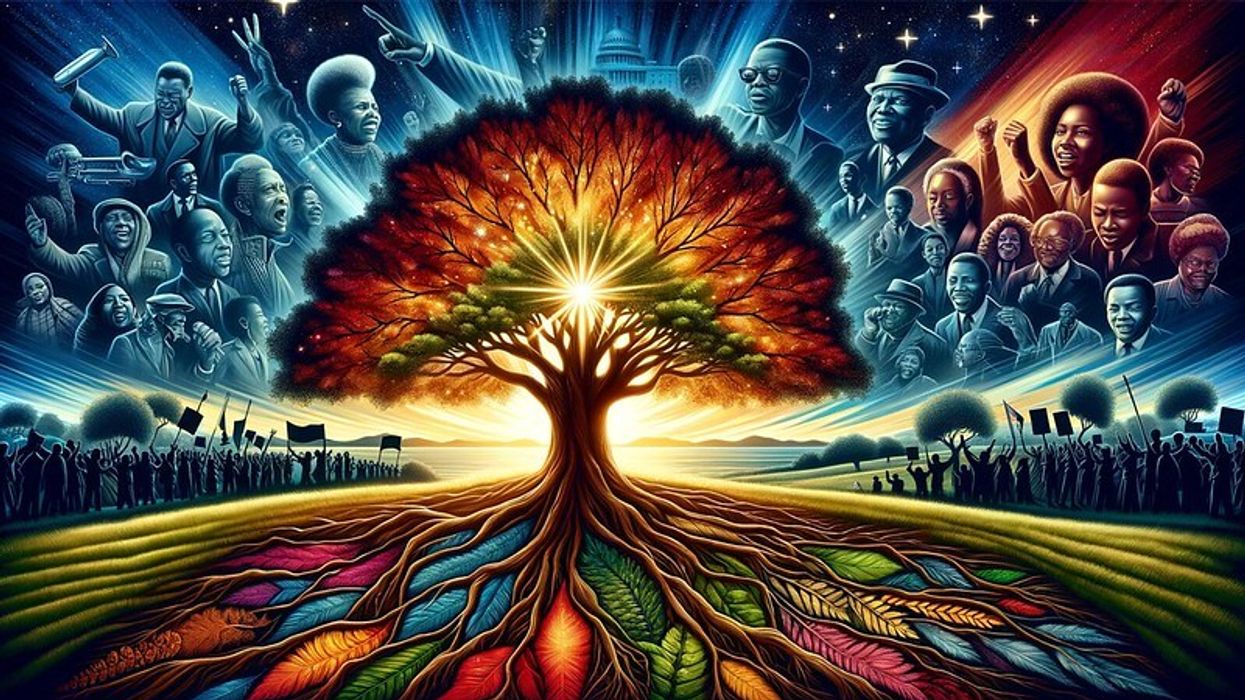Emoji History: Understand This Fun Way Of Communication

Are you crazy about yellow smiley faces, whether in the form of stickers or pillows or even small pouches?
If yes, you will be interested in the information about the emoji that we are sharing with you.
Here we will discuss the history of emoji, the invention and introduction of these emoticons, different types of emojis, and their meaning like the heart emoji, pistol emoji, calendar emoji, apple emoji, peach emoji, human emoji, emoji characters with different genders and skin tones, and much more.
There are fun facts about these emoticons like the emoji used the most in the past year, the first that was first invented, emoji keyboards, and the era before these emoticons arrived. These emoticons have been used enthusiastically worldwide to help people express what they are feeling or any other message just with one or two emojis.
There is a comprehensive list of emoticons, each with its meaning and expression making conversations more fun and enjoyable.
As technology is advancing, so are the ways of communication. While there was a time when people used to write letters, we now can send quick text messages or have a video call to talk to the people living far away.
Different universities worldwide are trying to analyze the acceptability and universality of emojis. The Kika emoji keyboard is the most useful input tool for this study.
The University of Michigan analyses over 1.2 million messages using the Kika Emoji Keyboard and announced that the title of the most popular emoji goes to the face with tears of joy. It was followed by the heart and the heart eyes emoji as the second and third positions.
The same technique was used to understand if the usage of emojis is a universal phenomenon or varies according to countries or regions. Peking University and Michigan University analyzed over 427 million messages from 212 countries in this study.
Kika Emoji Keyboard was made available in 60 different languages for this study. After careful analysis, it was understood that emoji usage had assumed greater importance across countries. It is becoming the universal language that bridges the differences between different world cultures.
This technology has made the world a very small place, where everyone is linked to each other with different gadgets. The newest and the most exceptional communication is being done with emojis.
Emojis were a kind of digital revolution that changed the history emojis and gave way to emoji designs that we use today.
Every emoji that we use is unique and has a different meaning, and there are many types of emoji sets that one can find, but only one standard.
Hence, here we will be looking at emojis, the latest and the oldest, the most used to the least, when they were introduced to who introduced them, and many more fun facts about emoji usage. Afterward, also check 21 Emoji crafts that are seriously fun and an Emoji quiz.
What is an emoji?
If you use a smartphone and regularly send text messages or use a messenger app, you will probably already be familiar with the emoji. The emoji phenomenon has taken the world by storm and has become the universal language in the last few years.
Be it social media platforms, private chats, or any other social media tools, a wide range of emojis are used by people worldwide to communicate their thoughts. So, let us now discuss some of the most important aspects of an emoji.
An emoticon is an expressive language depicted by yellow faces, some attractive symbols, and signs making communication a more fun process than it used to be. If we define it more formally, emoji is a small digital icon or image used to express emotions, ideas, and thoughts.
They have been developed to the extent that one emoji can be enough instead of writing a whole sentence. From national flag icons to food item emojis, we encounter different sets of emoticons from time to time.
Considering that emojis play a crucial role in present-day text messages and digitally written material, let us look at the things that can be done using an emoji.
The most general use is to fill the places of emotions that otherwise can't be expressed in a text. You are laughing with tears of joy reading a message sent by your friend, and emoticons have that covered.
Making communication more expressive. While earlier, during the era of text messages, not very long ago, it used to get tiring trying to understand the tone of the sender and what they were trying to imply.
But with the introduction of emojis, this problem is resolved as now the emoticons in the text deliver the correct expression and tone of the message.
Though these digital icons are used all around the globe, there are places where using them might not be considered reasonable. Like delivering a presentation, writing a strictly professional email, scripting a contract, and many more places like that. They do not only have any academic importance.
These emoticons are used to make the conversations light, enjoyable, and as a medium to convey the right set of emotions.
Who introduced emojis for the first time?
How old is the emoji history? Emoji concept and design were developed by whom? These are some of the questions that come to the mind of many users. So, let us now discuss some essential facts regarding the individual or individuals who introduced emojis for the first time.
These emojis, which we all use almost every single day, whether to tell our moms what to cook or tell dad what we are doing, have become a very integral part of our day-to-day life.
As a matter of fact, emojis have become the lingua franca of the modern world. People use different emojis to share their feelings or responses to different messages or posts.
In 1982, Scott Fahlman was working as a computer scientist at Carnegie Mellon University. He wanted to find a way to distinguish serious messages from jokes. He, therefore, proposed the sage of a smiley face on the message board at Carnegie Mellon University. He believed that it would help the users distinguish serious messages from jokes or funny messages.
They have settled in our lives to the extent that we often wish to be able to use them in our assignments, essays, and even in real life when we are unable to express what we are saying. So, the credit of inventing this fantastic digital visual language goes to Shigetaka Kurita.
Shigetaka Kurita is a Japanese artist credited with introducing this method of conversation to the whole world. When he first developed these icons, he was working for NTT Docomo, a telecommunicating company.
He was developing a new platform for the internet when he encountered the restricted range of characters to be used. He then thought of replacing these words with tiny images to convey more information within the limited characters. And that's how emoji characters came into existence.
This took over ten years, and soon a standard Unicode set of emojis was created by Unicode. This means that people from all around the globe were using the same sort of emoticon dictionary and following the same emoticon language.
As most of these gadgets were using international standard languages, thus emoticon language was straightforward to get incorporated. If we try to understand the meaning of EMOJI, then from Japanese culture, it means Character Picture, where 'e' stands for picture and 'Moji' for a character.
Different Emojis And Their Meaning
There are many emojis that are being used all around the globe, with 3,633 as per the September 2021 Unicode standard. This is a massive number by any means. But which are the most popular emojis? What is the meaning of different emojis? Let us discuss these questions further.
Thus, it will be very difficult to explain the meaning of all the emoji symbols and will take forever to complete this article. Hence, we will be looking at the top 10 most used emoticons, along with the meaning of what they mean. Here is a list of the most popular emojis and their meanings:
(😭) Face crying out loud: while depicting a person crying loudly, this emoticon is used in a more ironic form for representing positive news. This was considered tears of the happy face in 2021 mostly.
(😂) The face of tears of joy: primarily used to depict that you are laughing and have tears of joy in your eyes. Simply a positive emoji used most in the year 2020.
(✨) Sparkles: This emoticon is again a famous one depicting something pure, newness, general, excitement, and sometimes even the irony of a situation.
(❤️) Red heart: signifies love and gratitude globally. Generally paired with positive messages, this emoticon, in simpler terms, depicts good and positive feelings.
(🥺) Pleading face: this is used with different motives. Can depict happy tears hearing something good while giving a puppy-dog eye face or showing that the thing hurt your sentiments and you are about to cry. These are some of the most used meanings of this emoticon.
(🤣) Rolling on the floor laughing: this can be the visual representation of ROFL, which is a widespread term in the dictionary of the youth.
(🔥) Fire symbol: the best way to describe this symbol is 'on fire.' The feeling of being on top of the world due to something positive like success or a piece of good news.
(😍) Heart-shaped eyes, smiley face: this conveys the feeling of love, infatuation, and even admiration towards something. Most people try to tell with this emoticon is their obsession with that thing.
(🥰) Smiley face with hearts: depicts the face of the person you felt loved by the words sent by the communicator. This emoji is widely used to tell that the person felt loved and conveyed affection.
(🙏) Folded hands: this emoticon can be used to thank, request, show gratitude, hope, and faith. People also use it while conveying a message of prayer.

When was emoji created?
As mentioned earlier, under the point of who created the emoji. Let us now look at the years this all took place and how this typographical art came into existence. Was this the first attempt at such a language or typographical art that has been used for a longer time than these emoticons?
Thus, the brief history that led to the development of these emotions that we use today is summed up in the bulletin points given below in the form of an emoji story.
Technically speaking, the emoji that we know today had an ancestor known as an emoticon, which was published in an American humor magazine, named the Puck Magazine, somewhere around 1881, almost 100 years before the present day emojis.
These emoticons were made with punctuation marks and depicted emotions; they were known as typographical art.
During the 90s, these emoticons found their way in the internet-speaking and became an integral part of it.
There have been different accounts to when and who developed the first emojis, but the most celebrated and the most recognized ones are those created by Shigetaka Kurita in 1999, consisting of 176 characters.
For almost a decade, they were an integral part of the Japanese market, while this set reached the whole world when Apple and Android incorporated a special emoji keyboard in their mobile phones.
And today, the whole world is aware of what emojis are and what role they play in the lives of people.
Did you know!
After reading all sorts of information, let's now have a look at some fun emoticon facts like the top used emoji of 2021, the new set of emojis launched, and many such fun facts.
The 3,633 emojis include all the skin tones, genders, flags, and all the other sequences. As per the emojipedia, we have gathered the following data.
On July 17, emojipedia hosted the World Emoji Awards and is therefore known as world emoji day.
Heart on fire received the award for the best new emoji in 2021.
Describing 2021 with an emoji, the syringe emoji won the price.
While the lifetime achievement emoji went to the loudly crying face on Twitter. Last year the happy tear face was in its place.
Did you know that in the year 2017, the New York City Council established the city's first Office of Nightlife (ONL) under the Mayor's Office of Media and Entertainment?
Every year, the list of the top 10 emojis is provided by emojipedia and is made up after observing the trends and Twitter platform and other social media platforms.
Even there are biddings done for buying and selling an emoji that can reach billions of dollars.
The worldwide use of emojis gained great popularity when a dedicated emoji keyboard was introduced for a mobile platform. Recently, numerous new types of emojis are being introduced across various platforms by developers.
Here at Kidadl, we have carefully created many interesting family-friendly facts for everyone to enjoy! If you liked our suggestions for Emoji history, then why not take a look at 21 Emoji crafts that are siri-ously fun or Emoji quiz?
We Want Your Photos!
More for You
See All
Bachelor of Science specializing in Microbiology

Oluwatosin MichaelBachelor of Science specializing in Microbiology
With a Bachelor's in Microbiology from the Federal University of Agriculture, Abeokuta, Ogun State, Oluwatosin has honed his skills as an SEO content writer, editor, and growth manager. He has written articles, conducted extensive research, and optimized content for search engines. His expertise extends to leading link-building efforts and revising onboarding strategies.
Disclaimer
1) Kidadl is independent and to make our service free to you the reader we are supported by advertising. We hope you love our recommendations for products and services! What we suggest is selected independently by the Kidadl team. If you purchase using the Buy Now button we may earn a small commission. This does not influence our choices. Prices are correct and items are available at the time the article was published but we cannot guarantee that on the time of reading. Please note that Kidadl is a participant in the Amazon Services LLC Associates Program, an affiliate advertising program designed to provide a means for sites to earn advertising fees by advertising and linking to Amazon. We also link to other websites, but are not responsible for their content.
2) At Kidadl, we strive to recommend the very best activities and events. We will always aim to give you accurate information at the date of publication - however, information does change, so it’s important you do your own research, double-check and make the decision that is right for your family. We recognise that not all activities and ideas are appropriate for all children and families or in all circumstances. Our recommended activities are based on age but these are a guide. We recommend that these ideas are used as inspiration, that ideas are undertaken with appropriate adult supervision, and that each adult uses their own discretion and knowledge of their children to consider the safety and suitability. Kidadl cannot accept liability for the execution of these ideas, and parental supervision is advised at all times, as safety is paramount. Anyone using the information provided by Kidadl does so at their own risk and we can not accept liability if things go wrong.
3) Because we are an educational resource, we have quotes and facts about a range of historical and modern figures. We do not endorse the actions of or rhetoric of all the people included in these collections, but we think they are important for growing minds to learn about under the guidance of parents or guardians.







